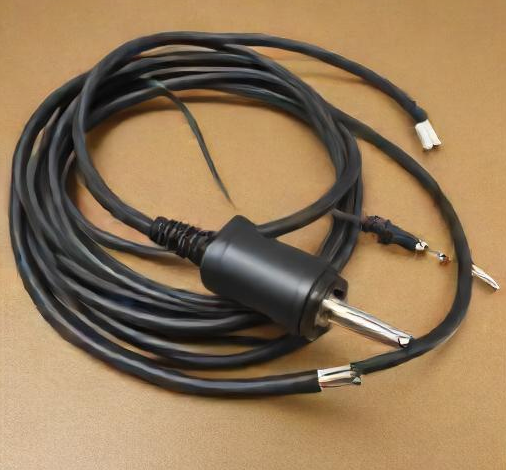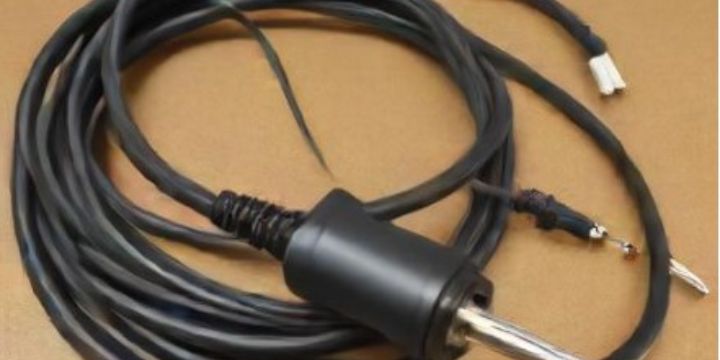In the world of household appliances, a vacuum cleaner is a hero, tirelessly sucking up dust and debris to keep our homes clean.
But what happens when its power cord starts to fray or malfunction? Fear not!
In this blog post, we’ll explore some ingenious ways to repair and fix a vacuum’s power cord, ensuring your trusty cleaning companion stays in top-notch shape for years to come.
Let’s dive in!
In this post we will cover:
- What Causes Damage to a Vacuum Cleaner Power Cord?
- How to Repair & Fix Vacuum Cleaner Power Cord: A Step by Step Guide
What Causes Damage to a Vacuum Cleaner Power Cord?

Some of the most common causes that can result in the damage and failure of a vacuum cleaner power cord are provided below:
1. Cord stretching: You may inadvertently overextend the power cord when you are using the machine. That is when the wire is stretched beyond its limit.
The stretching will cause the wires in the power cord to break loose, disrupting electrical current transfer to the vacuum.
2. Twisted cord: Wrapping the power cord around the machine may cause it to twist from one end. The twisting will easily break the wire threads on the inside. When the wire threads break, the vacuum’s motor will fail.
3. Chewed cord: if you are a pet owner, there is a chance that your fur babies may dislike the sound coming from your vacuum or will be afraid of it.
In such a case, the pets’ aggression may be taken out on the bitten or chewed cord.
4. Split cord: this is another general damage that may occur on a vacuum cleaner power cord.
Some individuals fix the cord by wrapping electrical tape around the area that is damaged.
However, the brush roller located in the vacuum’s bottom is vulnerable to running over the taped cord.
How to Repair & Fix Vacuum Cleaner Power Cord: A Step by Step Guide
1. Inspecting the damaged area: investigate the damaged area of the power cord to access the damage.
Thoroughly examine the damaged area to determine whether the defect is at the center, the switch, or the plug.
2. Tape surface damages: if the power cord only has surface damage, tape these areas using electrical tape.
The electrical tape is shock sensitive and insulates the thread-like inner wires of the power cord, preventing shocks and sparks.
Avoid the use of masking, duct, or shipping tapes since they do not offer the same protection.
3. Fixing the cord: for you to fix the power cord, you can either cut it and replace the plug with a new one or interweave the wires together.
If you choose to interweave the wires, begin by cutting the damaged area of the vacuum cleaner power cord.
Secondly, expose the thin thread-like wire by stripping half an inch of the external plastic part of the cord.
Thirdly, twist the wires together, and lastly, use a thick layer of electrical tape to wrap the lines.
4. Replacing the electric plug: cut the power cord two or three inches above the plug and then strip the external plastic wire about half an inch such that each wire is seen clearly.
Uncover the new plug and connect each wire to the corresponding terminals inside the plug.
Replace the cover and use the screwdriver to tighten the screws.
5. Additional help: if you cannot repair or fix the power cord of the vacuum cleaner, consult an electric repair professional.
If the vacuum cleaner power cord has been severely damaged, the professional will get rid of the damaged area or replace the entire cord with a new one.
6. Test the vacuum: after successfully repairing the power cord, plug in your machine and check whether it works properly.
If the problem persists, there is an issue in another part of the unit.
Additional Suggestions
You can prevent your vacuum cleaner power cord from damage by avoiding these common mistakes:
1. Make sure that the vacuum power cord is kept away from the brushes that roll on the vacuum cleaner’s surface.
2. Avoid wrapping the power cord around the vacuum when you are not using it.
3. Refrain from using the wrong extension cord by always checking the wattage or amp of the machine prior to connecting the extension cord.
4. Inspect the vacuum cleaner power cord as well as other parts of your machine on a monthly basis to prevent shock and sparks that may emanate from the vacuum.
5. While vacuuming the entire house, avoid pulling the power cord.
6. Keep the vacuum cleaner power cord from pets since they may get aggressive and damage the cord.
FAQs
How can I tell if my vacuum’s power cord needs repairing? Look for signs such as fraying, exposed wires, or a loss of power.
If you notice any damage, it’s best to address it promptly to prevent further issues.
Can I still use my vacuum if the power cord is damaged? It’s not recommended to use a vacuum with a damaged power cord, as it poses a safety risk.
Repair or replace the cord before using the vacuum again.
How long does it take to repair a vacuum’s power cord? The time required depends on the extent of the damage and your experience with electrical repairs.
Simple fixes may take just a few minutes, while more complex repairs could take longer.
Will repairing the power cord void my vacuum’s warranty? It’s essential to check your vacuum’s warranty terms.
In some cases, DIY repairs may void the warranty, so it’s best to consult the manufacturer or a professional if you’re unsure.
How can I prevent damage to my vacuum’s power cord in the future? Avoid pulling on the cord to unplug the vacuum, store it properly to prevent tangling, and inspect it regularly for signs of wear.
Additionally, consider using a cord protector for added durability.
The Wind-Up
So, there you have it – a handful of nifty techniques to mend your vacuum’s power cord!
From simple tape tricks to more elaborate splicing methods, repairing your vacuums’ cord can be a breeze with the right know-how.
Remember, safety first, and always unplug your vacuum before attempting any repairs.
With these clever tips, you can extend the life of your vacuum and keep your floors spick and span for years to come!
